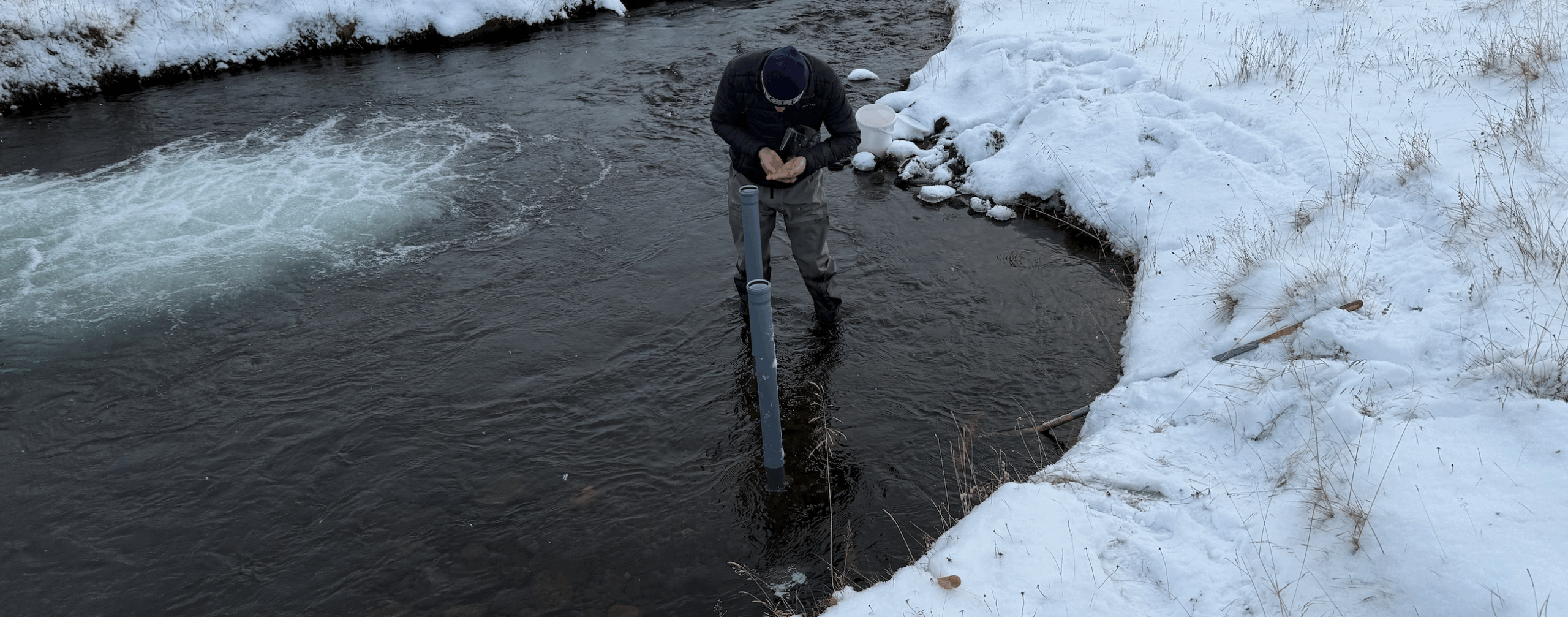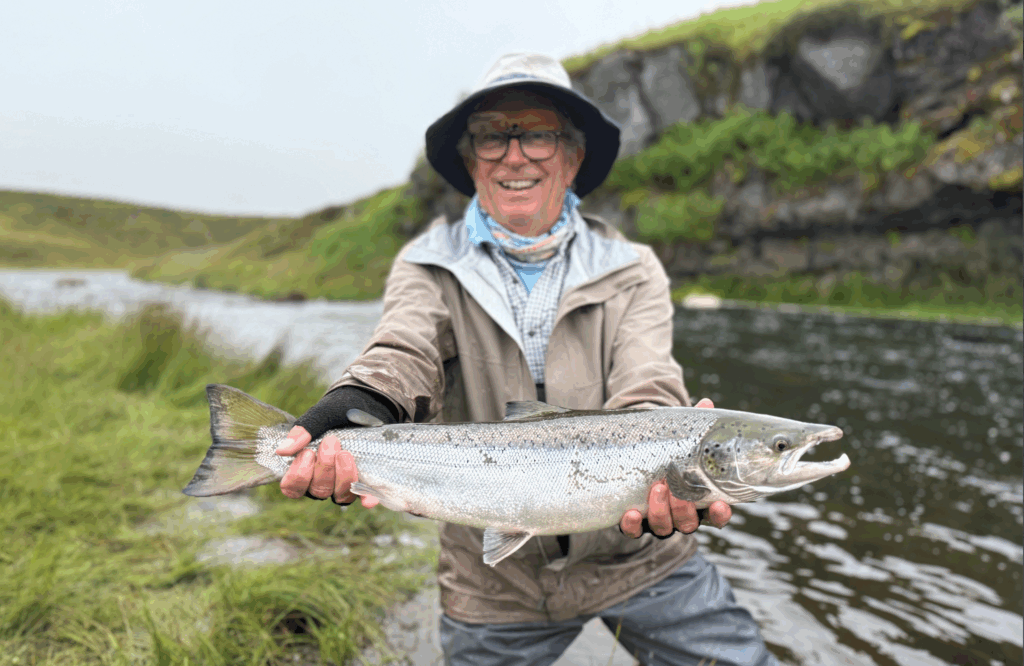As winter settles in and the fishing season winds down, our focus shifts from rods and reels to shovels and gravel. This time of year, our team is out on the rivers helping the next generation of Atlantic salmon get their start.
Earlier this autumn, we collected fertilized eggs from wild salmon caught in our rivers. These eggs are now carefully planted in gravel beds, often in tributaries and upper stretches that salmon can’t reach on their own. Buried safely through the cold months, they’ll rest until spring, when tiny alevins hatch and begin the remarkable journey of life.



Finding good places to dig this season wasn’t as easy as expected. Almost everywhere we went in the main rivers, salmon had already been there before us, their spawning redds were visible across the riverbeds, a sure sign that the fish had done their work. It’s one of the best sights we can hope for, clear evidence of strong, natural spawning activity and healthy river conditions.
Some of the eggs are also brought to a hatchery station where they will be fertilised, they’ll hatch in a protected environment. The young fish, known as parr, grow there until they’re strong enough to be released as smolts. These smolts, also from eggs collected from wild fish in earlier years, are later released into our rivers and tributaries that salmon cannot access naturally. By spreading them out, we give each fish more room and reduce competition for food and space, improving their odds of survival.

The Incredible Life Cycle of the Atlantic Salmon
The Atlantic salmon’s life cycle is one of nature’s great stories of resilience.
After being fertilized in late autumn, the eggs spend 6–8 months buried in the gravel before hatching in spring. The young fish live in the river for 2–5 years as parr, depending on temperature, food supply, and river conditions. When they reach the smolt stage, they undergo a physical transformation that prepares them for life in saltwater.
They then make their way downstream to the ocean, where they spend one to three years feeding and growing before returning, remarkably to the very same river where they were born. Every salmon that takes a fly on our rivers has survived years of hazards in both fresh and salt water, crossing oceans only to find its way back to this exact place. It’s something we think about every time we hold one in our hands — a reminder of just how many things must go right for that moment to happen.


A Long-Term Effort That’s Paying Off
This combination of smolt release and digging fertilised eggs, has made a real difference in strengthening our salmon stocks. It’s patient work that takes place outside of the fishing season. Seeing healthy redds and knowing countless new lives are buried beneath the gravel, is proof that the effort is working and that the future of our rivers looks bright.